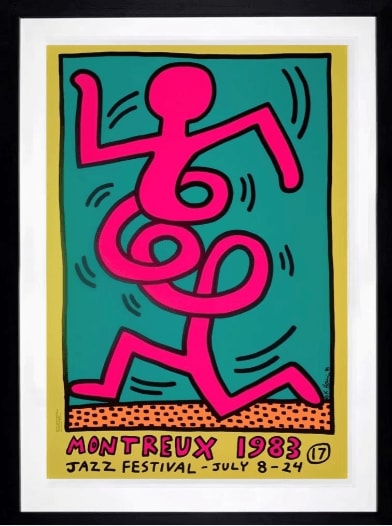Keith Haring began his artistic journey as a street artist, creating bold, energetic works on the walls of New York City's subways. His passion for making art accessible to the public led him to explore a wide range of mediums, including screen-prints, lithographs, etchings, and posters, which became a central part of his artistic expression alongside his street art.
Haring’s first major gallery exhibition took place in 1982 at the Tony Shafrazi Gallery in New York, marking a significant milestone in his career. Shortly after, he was invited to design posters for the renowned Montreux Jazz Festival in Switzerland, where he created several iconic designs. During his time in Montreux, Haring continued to work prolifically, painting murals on various surfaces, from stage backdrops to street panels.
Haring’s art, recognisable for its dynamic figures, bold lines, and vibrant colors, often carried a deeper message, addressing social issues like conflict, mortality, and inequality. His public works, including a prominent mural on the Berlin Wall in 1986, became powerful statements on topics such as LGBTQ+ rights and the Safe Sex campaign, reflecting the political and social climate of the era.
Though his work is playful and visually striking, it often alluded to the more somber realities of the time, particularly the devastating effects of the AIDS epidemic, which ultimately claimed Haring’s life. His ability to bridge the gap between street art and fine art made his work relatable to a broad audience, ensuring that his message reached people from all walks of life.
Haring’s posters, in particular, served as a key platform for his activism, raising awareness and promoting social change. Over time, these works have become highly valued for their artistic and cultural significance, symbolizing Haring's enduring legacy.
Through his unique style and commitment to social causes, Keith Haring left an indelible mark on the world of art, inspiring generations with his fusion of creativity and activism.
